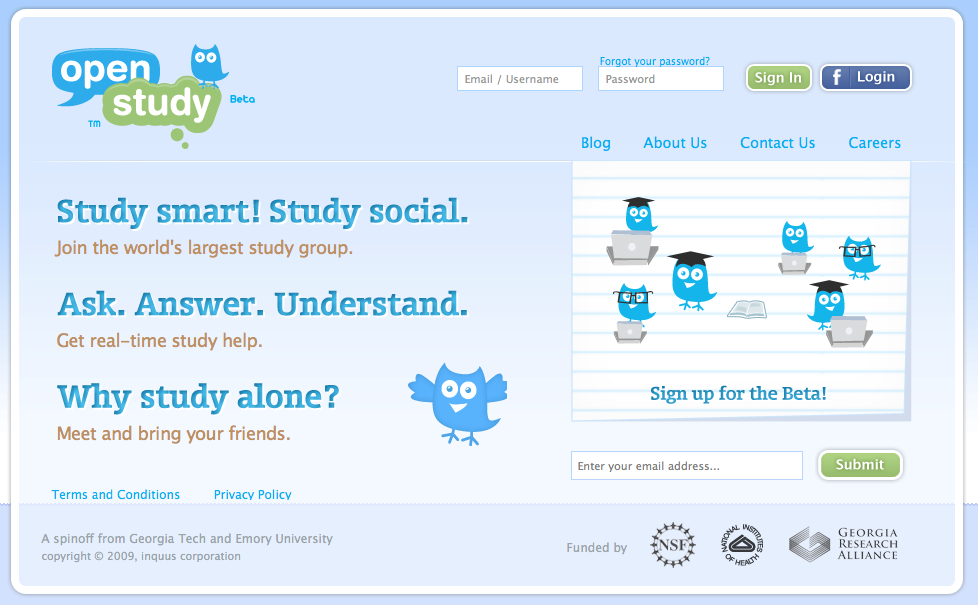Biola’s technology savvy students have a new study option at their fingertips: OpenStudy, a website seeking to create a worldwide study environment.
Describing itself as a “social learning network,” OpenStudy allows its 4,000 (and counting) users to dialogue about whatever academic topics interest them, asking questions and giving answers in real time. Under the mantra of “why study alone?” students can create or join study groups focused on certain topics and assess credibility by rating other users’ contributions.
Freshmen Julia Lindenlaub and Briana Ung said they would consider using OpenStudy as an additional resource.
“It’s helpful to just be able to get thoughts from all sorts of people, instead of just the people you’re in contact with on a day-to-day, face-to-face basis,” Ung said.
Georgia Institute of Technology professor Ashwin Ram, Emory University dean Preetha Ram, and their former student and chief technology officer Chris Sprague, founded OpenStudy in 2007, saying they hope to change the way the world learns. Entrepreneur Phil Hill was later hired as CEO. Altogether, the network’s website describes itself as similar to walking into a library or coffee shop and finding the perfect group of students to study with.
Joining OpenStudy starts with constructing a user profile listing information such as the user’s name, school and a brief summary about you. Like its social network predecessors, students can follow their friends and receive notifications of activity in their areas of interest. And much like Twitter and Facebook, success depends on high volume usage among students.
Junior Cameron Gardiner said he would only use OpenStudy in conjunction with other resources, since information from the Internet can be inaccurate.
“I would take what’s posted on the Internet with a grain of salt,” Gardiner said.
Lindenlaub and Ung also said they were concerned about accountability and accurate information.
“You could be talking to a freshman who doesn’t know the material very well,” Lindenlaub said.
Gardiner said being a responsible user of OpenStudy is also important to him.“People who use it might be accused of being lazy, and there is a definite danger in that,” he said. “We’re an age that is into technology and uses it to our advantage.”
Students are not the only OpenStudy users, either. Institutions like MIT have formed study groups for specific courses, and professors can conduct online office hours and give additional instruction on the site. But student-to-student interactions still drive the website.
Professor Tim Stranske, graduate studies chair in Biola’s School of Education, said he has seen the value of students helping each other learn.
“I find students can often explain things better to each other than we professors can explain it to them,” he said.
Mirroring the concerns of Lindenlaub, Ung and Gardiner, Stranske said he also sees the possibility of inaccurate information as the downside to a website like OpenStudy.
“When you’re going on the web you never know whether you’re talking to someone really smart or a seventh grader,” Stranske said. “You might get advice from another student that is inconsistent or wrong. But that can happen when you’re asking a fellow student in your class, too.”
Stranske said he can see OpenStudy becoming a great resource, however, especially since it is always available.
“Professors don’t stay up as late as college students,” he said with a laugh.







